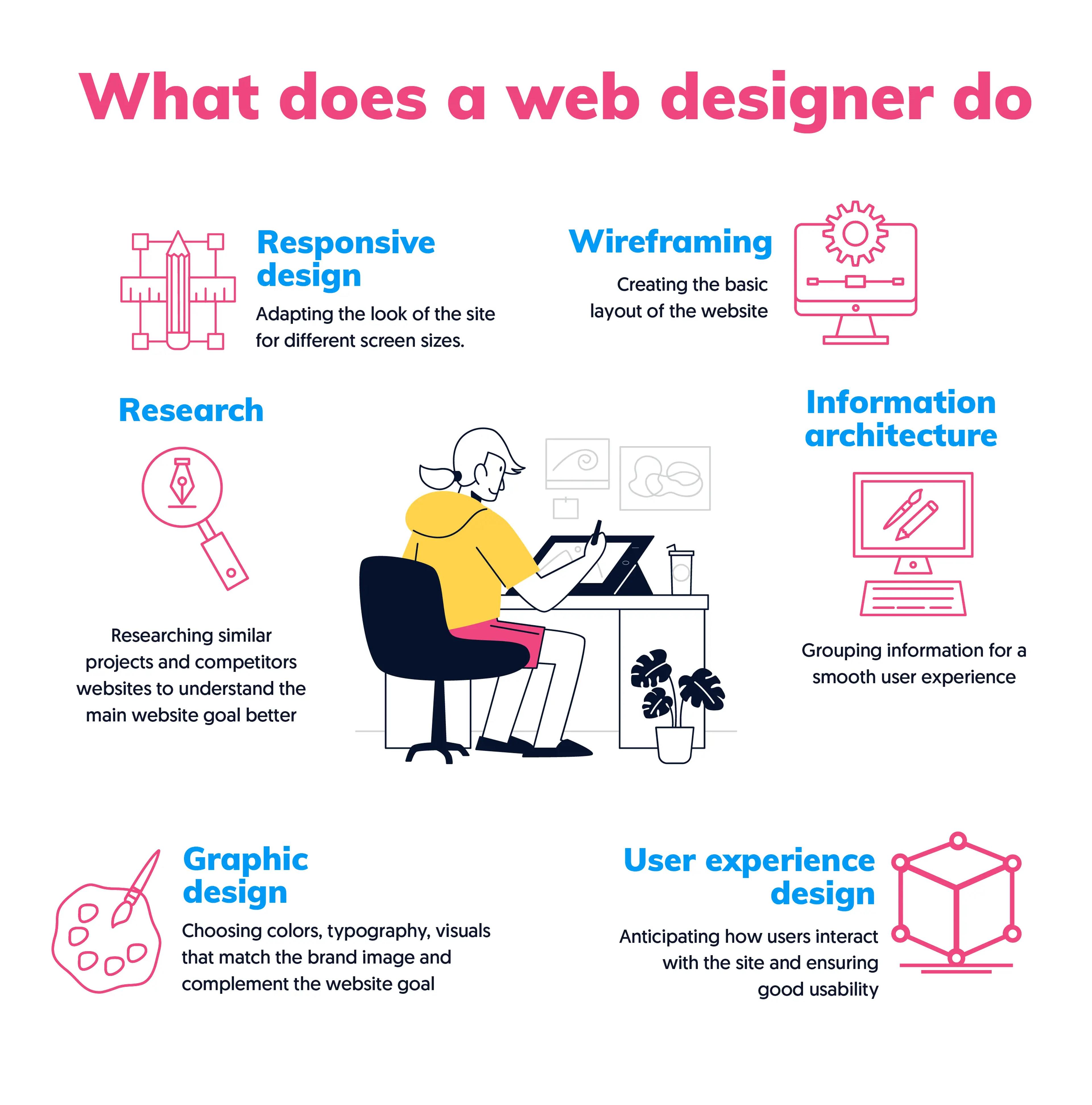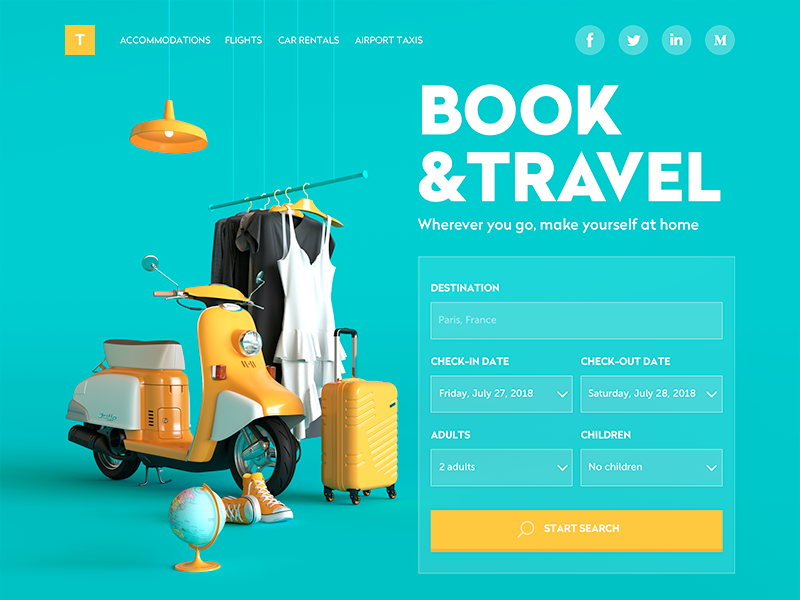Aligned Position Web Design: Comprehensive Web Design Solutions for Small and Large Businesses
Aligned Position Web Design: Comprehensive Web Design Solutions for Small and Large Businesses
Blog Article
The Ideal Kinds Of Web Layout to Enhance User Experience and Involvement
In the ever-evolving landscape of digital interaction, the performance of Web style significantly influences individual experience and interaction. Numerous design approaches, such as minimal, receptive, and interactive formats, each deal one-of-a-kind benefits that can accommodate diverse user demands. Comprehending which kinds of Web layout finest offer these goals can be crucial for services aiming to boost consumer fulfillment and retention. However, the inquiry continues to be: which style aspects truly resonate with individuals and foster significant engagement? The expedition of these principles exposes essential understandings that may redefine your technique to Web style.
Minimalist Website Design
As digital landscapes end up being significantly chaotic, minimalist Web design has actually become a powerful method to boosting individual experience. This layout ideology focuses on simpleness, concentrating on important aspects while removing unnecessary disturbances. By utilizing enough white area, uncomplicated navigating, and a restricted shade combination, minimal layout fosters clarity and routes individual interest to essential web content.
The core concept of minimal website design is to create a smooth communication for customers. By decreasing cognitive load, users can promptly understand information without really feeling overwhelmed. This straight method not just boosts use however likewise encourages interaction, as site visitors are more probable to discover a website that is very easy and aesthetically appealing to browse.
Additionally, minimal design usually highlights typography and imagery, making use of these aspects purposefully to share messages efficiently. This emphasis on important parts can improve brand identification and create a remarkable user experience. Fundamentally, minimalist Web design is not just a fad; it is a thoughtful methodology that recognizes the significance of user-centered style. By removing extraneous components, developers can develop a much more appealing, efficient, and satisfying Web experience for all customers.
Responsive Website Design
In today's diverse electronic setting, receptive Web layout has come to be necessary for developing a seamless user experience throughout a multitude of devices. As customers gain access to web sites on smart devices, laptops, desktop computers, and tablet computers, the capacity of a web site to adapt its design and material to various screen dimensions and resolutions is crucial.
Responsive Web design uses flexible grids, photos, and CSS media questions to make certain that Web content is presented ideally, despite the device utilized. This technique not only improves the aesthetic allure of an internet site however additionally substantially boosts use. Individuals are more likely to involve with a site that offers a constant experience, as it removes the frustration of having to zoom in or scroll excessively.
Additionally, online search engine, consisting of Google, focus on mobile-friendly internet sites in search positions. By adopting responsive design, companies can boost their exposure and get to a wider target market. This approach likewise streamlines web site maintenance, as a single variation of the website can cater to all gadgets, reducing the requirement for numerous variations. In summary, responsive Web design is a basic technique that boosts individual experience, interaction, and total contentment.
Interactive Web Design
Receptive Web design prepares for boosting user experience, but interactive Web style takes this an action additionally by engaging users in a much more dynamic means - Aligned Position Web Design. By incorporating elements such as animations, clickable prototypes, and real-time comments, interactive Web layout astounds customers, drawing them right into a richer surfing experience
This strategy not just fosters interaction but additionally urges individuals to check out material proactively as opposed to passively eating it. Methods such as gamification, where individuals check over here gain incentives for completing jobs, can significantly improve the time spent on a website and improve overall contentment. Furthermore, interactive attributes can simplify intricate info, making it much more delightful and absorbable.

Incorporating interactive style aspects can likewise cause higher conversion rates, as users are much more most likely to engage with a website that actively includes them. Aligned Position Web Design. Ultimately, interactive website design changes individual experiences into memorable journeys, guaranteeing that visitors return time and once again
Flat Layout
Characterized by its minimalistic technique, level design stresses simpleness and performance, stripping away unneeded elements and concentrating on important functions. This style ideology focuses on usability, making certain that individuals learn the facts here now can browse user interfaces effortlessly and effectiveness. By employing a tidy aesthetic, flat style removes the mess often discovered in more ornate designs, thereby boosting customer concentrate on web content and performance.
The characteristic of flat style depends on its use of bold shades, easy typography, and geometric shapes. These components add to an aesthetically attractive user interface that is both approachable and contemporary. Furthermore, level layout promotes a sense of clarity, allowing customers to discern necessary activities and information without diversion.
Furthermore, level layout is particularly efficient in responsive Web layout, as its simplicity equates well throughout different gadgets and screen sizes. By focusing on essential functions, level layout not just meets user needs yet also urges seamless communication, making it a vital component of efficient Web design strategies.
Adaptive Website Design
Adaptive website design personalizes the individual experience by producing numerous fixed designs customized to different screen sizes and devices. Unlike receptive design, which fluidly changes a solitary layout, flexible design employs distinctive layouts for particular breakpoints, making certain optimum presentation on various platforms. This technique allows developers to concentrate on the distinct attributes of each This Site tool, improving usability by delivering precisely what individuals need based on their context.
Among the main benefits of flexible website design is its ability to enhance tons times and efficiency. By offering tailored content and photos that fit the individual's gadget, sites can minimize information usage and boost loading rates. This is especially beneficial for customers with slower links or restricted data plans.

In addition, flexible design promotes a more controlled and constant branding experience. Considering that developers develop numerous formats, they can make certain that the visual aspects align with the brand's identity across various systems - Aligned Position Web Design. This leads to a cohesive user experience, improving involvement and promoting user retention
Conclusion
Minimal design fosters clarity and focus, while receptive design makes sure versatility across various gadgets, promoting accessibility. Collectively, these design comes close to add to the creation of user-friendly settings that not only boost complete satisfaction but additionally drive greater conversion rates, highlighting their critical relevance in modern Web layout methods.

Minimalist layout fosters clarity and focus, while receptive layout guarantees versatility across different devices, advertising access. Jointly, these design approaches contribute to the development of straightforward settings that not only improve complete satisfaction but additionally drive higher conversion rates, emphasizing their crucial relevance in contemporary Web layout techniques.
Report this page